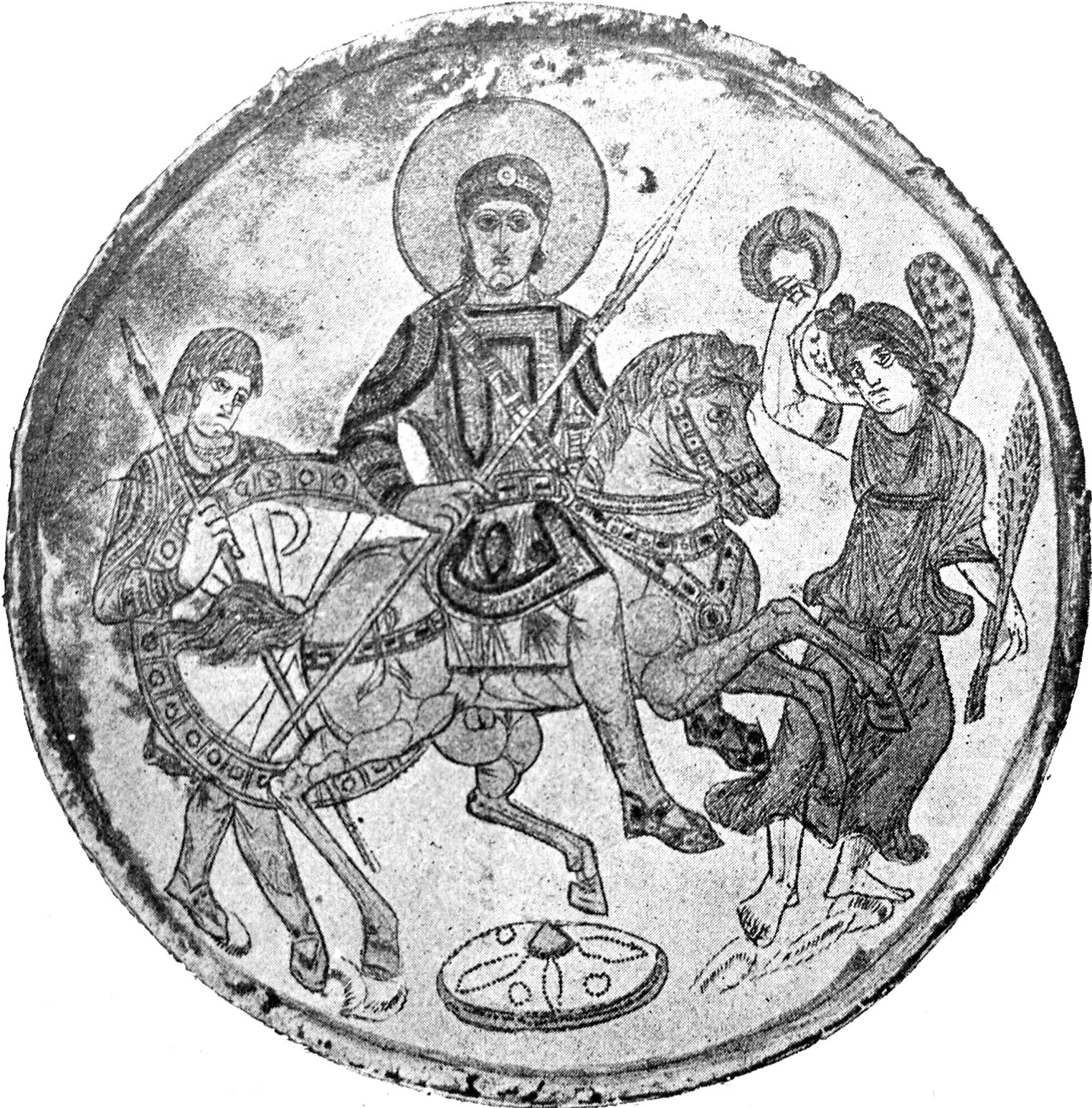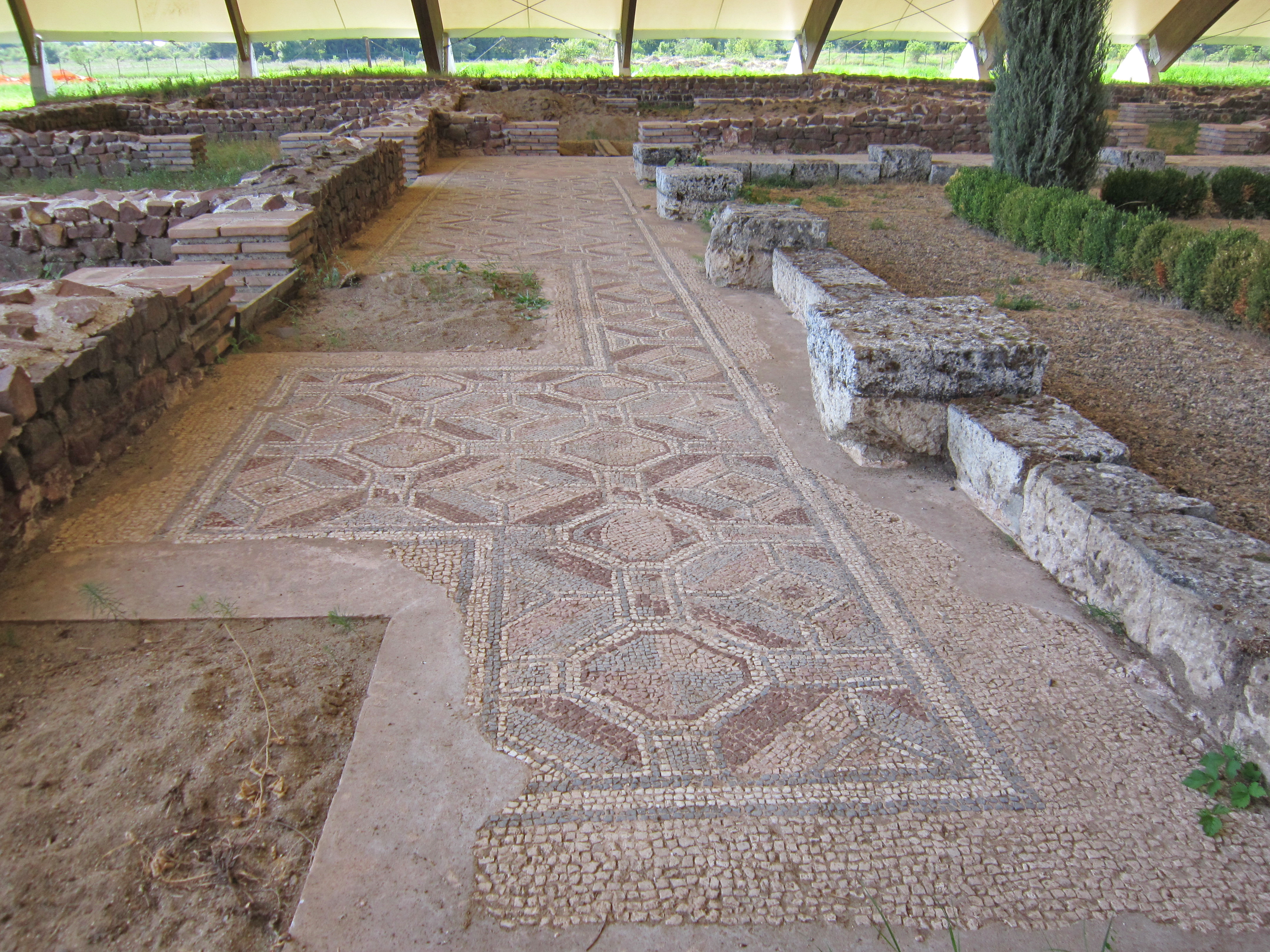|
Leipzig Panometer
The Leipzig Panometer is an attraction in Leipzig, Germany. It is a visual panorama displayed inside a former gasometer, accompanied by a thematic exhibition. The current theme is "Carolas Garten". The Panometer was created in 2003 by the Austrian-born artist Yadegar Asisi, who coined the name as a portmanteau of "panorama" and "gasometer". He opened another Panometer in Dresden in 2006. His panoramas are also displayed in Berlin, Pforzheim, Wittenberg, Hanover and Rouen. Building The Leipzig Panometer occupies a disused telescopic gas holder in Connewitz. The gasometer was built in 1909, under Hugo Licht, and was in operation until 1977. It has a diameter of and a total height of , including the cupola with lantern. From 2002 to 2005 it was renovated to allow the transformation into Asisi's panoramic display. The final step was the addition of a glass foyer, which connects it to an adjacent gasometer and also contains the restaurant. [...More Info...] [...Related Items...] OR: [Wikipedia] [Google] [Baidu] |
Museum Of Antiquities Of The University Of Leipzig
The Museum of Antiquities of the University of Leipzig (german: Antikenmuseum der Universität Leipzig) is a collection of antiquities in Leipzig, Germany. History The foundations of the collection were laid in the first half of the 18th century, with the first acquisitions of antiquities by the University. As early as 1735, Johann Friedrich Christ, archaeologist and professor of poetry, used antiquities from his ownership in lectures.Geschichte des Antikenmuseums History. In the early 19th century the antiquities collection acquired the title "Archaeology and Art Cabinet". While the emphasis of the collection was originally on antique coins, gems and s, this changed with the arrival of ... [...More Info...] [...Related Items...] OR: [Wikipedia] [Google] [Baidu] |
University Of Leipzig
Leipzig University (german: Universität Leipzig), in Leipzig in Saxony, Germany, is one of the world's oldest universities and the second-oldest university (by consecutive years of existence) in Germany. The university was founded on 2 December 1409 by Frederick I, Elector of Saxony and his brother William II, Margrave of Meissen, and originally comprised the four scholastic faculties. Since its inception, the university has engaged in teaching and research for over 600 years without interruption. Famous alumni include Gottfried Wilhelm von Leibniz, Johann Wolfgang von Goethe, Leopold von Ranke, Friedrich Nietzsche, Robert Schumann, Richard Wagner, Tycho Brahe, Georgius Agricola, Angela Merkel and ten Nobel laureates associated with the university. History Founding and development until 1900 The university was modelled on the University of Prague, from which the German-speaking faculty members withdrew to Leipzig after the Jan Hus crisis and the Decree of Ku ... [...More Info...] [...Related Items...] OR: [Wikipedia] [Google] [Baidu] |
Battle Of The Milvian Bridge
The Battle of the Milvian Bridge took place between the Roman Emperors Constantine I and Maxentius on 28 October 312. It takes its name from the Milvian Bridge, an important route over the Tiber. Constantine won the battle and started on the path that led him to end the Tetrarchy and become the sole ruler of the Roman Empire. Maxentius drowned in the Tiber during the battle; his body was later taken from the river and decapitated, and his head was paraded through the streets of Rome on the day following the battle before being taken to Africa. According to Christian chroniclers Eusebius of Caesarea and Lactantius, the battle marked the beginning of Constantine's conversion to Christianity. Eusebius of Caesarea recounts that Constantine and his soldiers had a vision sent by the Christian God. This was interpreted as a promise of victory if the sign of the Chi Rho, the first two letters of Christ's name in Greek, was painted on the soldiers' shields. The Arch of Constantine, e ... [...More Info...] [...Related Items...] OR: [Wikipedia] [Google] [Baidu] |
Constantine The Great
Constantine I ( , ; la, Flavius Valerius Constantinus, ; ; 27 February 22 May 337), also known as Constantine the Great, was Roman emperor from AD 306 to 337, the first one to convert to Christianity. Born in Naissus, Dacia Mediterranea (now Niš, Serbia), he was the son of Flavius Constantius, a Roman army officer of Illyrian origin who had been one of the four rulers of the Tetrarchy. His mother, Helena, was a Greek Christian of low birth. Later canonized as a saint, she is traditionally attributed with the conversion of her son. Constantine served with distinction under the Roman emperors Diocletian and Galerius. He began his career by campaigning in the eastern provinces (against the Persians) before being recalled in the west (in AD 305) to fight alongside his father in Britain. After his father's death in 306, Constantine became emperor. He was acclaimed by his army at Eboracum ( York, England), and eventually emerged victorious in the civil wars against ... [...More Info...] [...Related Items...] OR: [Wikipedia] [Google] [Baidu] |
Alexander Von Wagner
Alexander originally Sándor von Wagner (April 16, 1838 – January 19, 1919) was a Hungarian painter. Biography Wagner was born in Pesth. After graduating from the Real-Gymnasium in his hometown at the age of nineteen, he entered the Academy of Fine Arts at Vienna, where he was a student of Henrik Weber. The following year, he switched to the Royal Academy of Fine Arts at Munich and was taught by Professor Karl von Piloty from 1856 to 1864. From 1869 to 1910 he was professor in history painting at the Munich Academy. His themes were history paintings and Hungarian life scenes in particular. A portrait of Von Wagner painted by Franz Lachner belongs to the collection of the Gebrüder-Lachner-Museum in Rain since 2003. Among his students were Pál Szinyei Merse, Emil Wiesel, Anton Ažbe, Franciszek Żmurko. Von Wagner died in Munich, where he is buried in the Old Southern Cemeterey. Works His most famous work is ''The Chariot Race'' (now at the Manchester Art Gallery ... [...More Info...] [...Related Items...] OR: [Wikipedia] [Google] [Baidu] |
Ancient Rome
In modern historiography, ancient Rome refers to Roman civilisation from the founding of the city of Rome in the 8th century BC to the collapse of the Western Roman Empire in the 5th century AD. It encompasses the Roman Kingdom (753–509 BC), Roman Republic (509–27 BC) and Roman Empire (27 BC–476 AD) until the fall of the western empire. Ancient Rome began as an Italic settlement, traditionally dated to 753 BC, beside the River Tiber in the Italian Peninsula. The settlement grew into the city and polity of Rome, and came to control its neighbours through a combination of treaties and military strength. It eventually dominated the Italian Peninsula, assimilated the Greek culture of southern Italy (Magna Grecia) and the Etruscan culture and acquired an Empire that took in much of Europe and the lands and peoples surrounding the Mediterranean Sea. It was among the largest empires in the ancient world, with an estimated 50 to 90 million inhabitants, roughly ... [...More Info...] [...Related Items...] OR: [Wikipedia] [Google] [Baidu] |
Nepal
Nepal (; ne, नेपाल ), formerly the Federal Democratic Republic of Nepal ( ne, सङ्घीय लोकतान्त्रिक गणतन्त्र नेपाल ), is a landlocked country in South Asia. It is mainly situated in the Himalayas, but also includes parts of the Indo-Gangetic Plain, bordering the Tibet Autonomous Region of China to the north, and India in the south, east, and west, while it is narrowly separated from Bangladesh by the Siliguri Corridor, and from Bhutan by the Indian state of Sikkim. Nepal has a diverse geography, including fertile plains, subalpine forested hills, and eight of the world's ten tallest mountains, including Mount Everest, the highest point on Earth. Nepal is a multi-ethnic, multi-lingual, multi-religious and multi-cultural state, with Nepali as the official language. Kathmandu is the nation's capital and the largest city. The name "Nepal" is first recorded in texts from the Vedic period of the ... [...More Info...] [...Related Items...] OR: [Wikipedia] [Google] [Baidu] |
Stupa
A stupa ( sa, स्तूप, lit=heap, ) is a mound-like or hemispherical structure containing relics (such as '' śarīra'' – typically the remains of Buddhist monks or nuns) that is used as a place of meditation. In Buddhism, circumambulation or '' pradakhshina'' has been an important ritual and devotional practice since the earliest times, and stupas always have a ''pradakhshina'' path around them. The original South Asian form is a large solid dome above a tholobate or drum with vertical sides, which usually sits on a square base. There is no access to the inside of the structure. In large stupas there may be walkways for circumambulation on top of the base as well as on the ground below it. Large stupas have or had ''vedikā'' railings outside the path around the base, often highly decorated with sculpture, especially at the torana gateways, of which there are usually four. At the top of the dome is a thin vertical element, with one of more horizontal discs spre ... [...More Info...] [...Related Items...] OR: [Wikipedia] [Google] [Baidu] |
Mandala
A mandala ( sa, मण्डल, maṇḍala, circle, ) is a geometric configuration of symbols. In various spiritual traditions, mandalas may be employed for focusing attention of practitioners and adepts, as a spiritual guidance tool, for establishing a sacred space and as an aid to meditation and trance induction. In the Eastern religions of Hinduism, Buddhism, Jainism and Shinto it is used as a map representing deities, or especially in the case of Shinto, paradises, kami or actual shrines. A mandala generally represents the spiritual journey, starting from outside to the inner core, through layers. Hinduism In Hinduism, a basic mandala, also called a '' yantra'', takes the form of a square with four gates containing a circle with a center point. Each gate is in the general shape of a T. Mandalas often have radial balance. A '' yantra'' is similar to a mandala, usually smaller and using a more limited colour palette. It may be a two- or three-dimensional geometric ... [...More Info...] [...Related Items...] OR: [Wikipedia] [Google] [Baidu] |
Buddhism
Buddhism ( , ), also known as Buddha Dharma and Dharmavinaya (), is an Indian religion or philosophical tradition based on teachings attributed to the Buddha. It originated in northern India as a -movement in the 5th century BCE, and gradually spread throughout much of Asia via the Silk Road. It is the world's fourth-largest religion, with over 520 million followers (Buddhists) who comprise seven percent of the global population. The Buddha taught the Middle Way, a path of spiritual development that avoids both extreme asceticism and hedonism. It aims at liberation from clinging and craving to things which are impermanent (), incapable of satisfying ('), and without a lasting essence (), ending the cycle of death and rebirth (). A summary of this path is expressed in the Noble Eightfold Path, a training of the mind with observance of Buddhist ethics and meditation. Other widely observed practices include: monasticism; "taking refuge" in the Buddha, the , and the ... [...More Info...] [...Related Items...] OR: [Wikipedia] [Google] [Baidu] |








